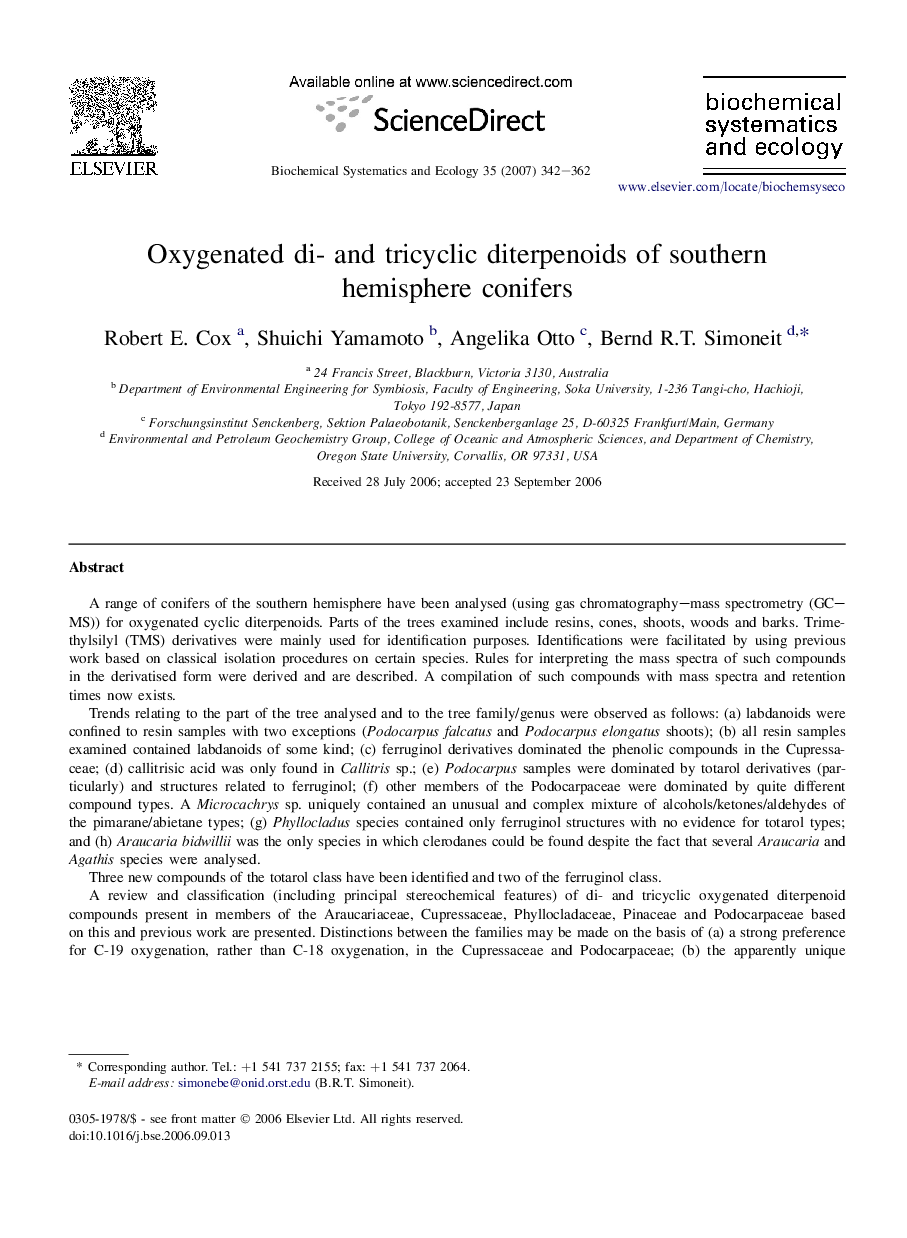| Article ID | Journal | Published Year | Pages | File Type |
|---|---|---|---|---|
| 1354794 | Biochemical Systematics and Ecology | 2007 | 21 Pages |
A range of conifers of the southern hemisphere have been analysed (using gas chromatography–mass spectrometry (GC–MS)) for oxygenated cyclic diterpenoids. Parts of the trees examined include resins, cones, shoots, woods and barks. Trimethylsilyl (TMS) derivatives were mainly used for identification purposes. Identifications were facilitated by using previous work based on classical isolation procedures on certain species. Rules for interpreting the mass spectra of such compounds in the derivatised form were derived and are described. A compilation of such compounds with mass spectra and retention times now exists.Trends relating to the part of the tree analysed and to the tree family/genus were observed as follows: (a) labdanoids were confined to resin samples with two exceptions (Podocarpus falcatus and Podocarpus elongatus shoots); (b) all resin samples examined contained labdanoids of some kind; (c) ferruginol derivatives dominated the phenolic compounds in the Cupressaceae; (d) callitrisic acid was only found in Callitris sp.; (e) Podocarpus samples were dominated by totarol derivatives (particularly) and structures related to ferruginol; (f) other members of the Podocarpaceae were dominated by quite different compound types. A Microcachrys sp. uniquely contained an unusual and complex mixture of alcohols/ketones/aldehydes of the pimarane/abietane types; (g) Phyllocladus species contained only ferruginol structures with no evidence for totarol types; and (h) Araucaria bidwillii was the only species in which clerodanes could be found despite the fact that several Araucaria and Agathis species were analysed.Three new compounds of the totarol class have been identified and two of the ferruginol class.A review and classification (including principal stereochemical features) of di- and tricyclic oxygenated diterpenoid compounds present in members of the Araucariaceae, Cupressaceae, Phyllocladaceae, Pinaceae and Podocarpaceae based on this and previous work are presented. Distinctions between the families may be made on the basis of (a) a strong preference for C-19 oxygenation, rather than C-18 oxygenation, in the Cupressaceae and Podocarpaceae; (b) the apparently unique occurrence of the ent-clerodane and ent-labdane classes of diterpenoids in certain species of the Araucariaceae; (c) certain highly oxygenated ferruginols are unique to the Podocarpaceae and Cupressaceae; and (d) podocarpic acid has only been found unequivocally in the Podocarpaceae.
